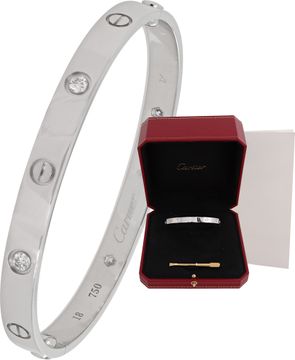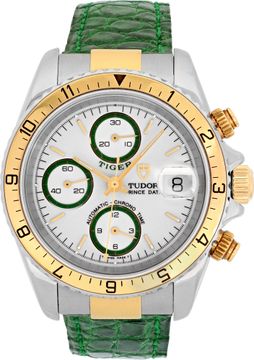Understanding Watch Movement Types: A Beginner's Guide
Whether you're purchasing your first luxury watch or expanding a growing collection, understanding watch movements is essential. The "movement" is the beating heart of a watch, responsible for keeping time and powering additional functions. In the world of horology, three primary types dominate the landscape: mechanical, automatic, and quartz. Each has distinct characteristics, advantages, and collector appeal. Let’s explore the different watch movement types, helping you make informed decisions when adding new pieces to your collection of timeless assets.
Mechanical Movements: Traditional Craftsmanship
Mechanical movements are the oldest and most revered type of watch movement, powered entirely by a mainspring that must be wound by hand. Unlike modern alternatives, these movements do not use any batteries or electronics. Instead, they rely on a complex series of gears, levers, and springs—all carefully crafted to deliver precision and elegance. Collectors often gravitate toward mechanical watches for their heritage and the artistry behind them. They appreciate the tactile ritual of winding the crown and the delicate ticking that speaks to centuries-old watchmaking tradition. Although mechanical movements may require more frequent servicing and regular winding, their soulfulness and craftsmanship make them timeless assets in any horological portfolio.
Automatic Movements: Self-Winding Ingenuity
Automatic watches are mechanical at heart but feature a self-winding mechanism. They harness kinetic energy from the wearer's wrist movement to wind the mainspring. This innovation, which emerged in the early 20th century, added convenience to the allure of traditional mechanical engineering. For those who wear their timepiece regularly, an automatic movement offers the ideal blend of heritage and practicality. The oscillating rotor inside the case winds the watch as you move, eliminating the need for daily winding. Many pre-owned luxury timepieces, including models from Rolex, Omega, and Jaeger-LeCoultre, feature automatic calibers that continue to run smoothly for decades with proper maintenance.
Quartz Movements: Accuracy and Affordability
Quartz movements revolutionized the watch industry in the 1970s, bringing unparalleled accuracy at a fraction of the cost of mechanical counterparts. Powered by a battery and regulated by a tiny quartz crystal that vibrates at 32,768 times per second, quartz watches typically require far less maintenance and are known for keeping incredibly accurate time. Though often associated with mass production, many luxury watchmakers—such as Cartier, TAG Heuer, and even Omega—have released high-end quartz models that offer prestige and precision in a sleek package. For first-time buyers or those seeking a low-maintenance daily asset, quartz watches are a great entry point into luxury horology.
Manual vs. Automatic: Choosing the Right Mechanical Watch
Both manual and automatic movements fall under the mechanical umbrella, but the experience of wearing each can feel different. Manual-wind watches emphasize interaction. You're part of the mechanism’s life cycle every time you wind it. Enthusiasts often find this ritual rewarding and reflective of a deeper connection to the craftsmanship. Automatic watches, on the other hand, suit those who prefer a more hands-off approach without sacrificing mechanical appeal. If you're unsure which is right for you, consider your lifestyle and preferences. Do you enjoy daily routines with your timepiece? A manual watch may suit you. Do you wear the same watch often and appreciate ease? Automatic could be ideal.
The Role of Complications in Movement Types
A "complication" is any feature on a watch beyond timekeeping, such as a chronograph, moon phase, or calendar. Mechanical and automatic movements are most often used to power complex complications. These features not only demonstrate a brand’s watchmaking prowess but also enhance a timepiece’s value and desirability. Quartz movements can also house complications, though they are usually electronic. Mechanical complications are prized for their intricacy and often require hundreds of parts working in harmony. Pre-owned luxury watches with complications offer enthusiasts access to historically significant, beautifully engineered pieces at a fraction of the price of new ones.
High-Accuracy Quartz (HAQ): The Luxury of Precision
Not all quartz movements are created equal. High-Accuracy Quartz (HAQ) movements, found in select models from Grand Seiko, Longines, and Omega, deliver extreme precision, often within ±10 seconds per year. These watches combine the dependability of quartz with the craftsmanship of luxury watchmaking, and many are housed in premium materials like titanium or ceramic. HAQ watches appeal to collectors who demand uncompromising accuracy without sacrificing aesthetics or quality. For those who admire minimal maintenance but still want a distinguished timepiece, HAQ models represent a compelling segment in the pre-owned market.
Hybrid Movements: The Best of Both Worlds?
Some watches blend mechanical and electronic elements, offering unique benefits. For example, Seiko Spring Drive movements use mechanical power but regulate time with an electronic quartz oscillator. These hybrids deliver the smooth sweep of a mechanical second hand with quartz-level accuracy. Such innovation appeals to forward-thinking collectors and those looking for something different in their collection. Hybrid watches are relatively rare, especially in the pre-owned space, making them desirable assets for those who appreciate both traditional mechanics and modern technology.
Considerations When Choosing a Movement Type
When shopping for a pre-owned luxury watch, the movement type can guide your choice based on lifestyle, taste, and maintenance preferences:
- Mechanical: Ideal for purists and collectors.
- Automatic: Best for everyday wearers who want traditional craftsmanship with convenience.
- Quartz: Perfect for those seeking accuracy and ease of use.
- Hybrid: Great for enthusiasts who want innovation and uniqueness.
It's also essential to consider service history when purchasing pre-owned watches. Mechanical and automatic movements benefit from regular servicing to maintain peak performance, while quartz movements may just need periodic battery replacement.
Final Thoughts: Movement as a Reflection of Personality
At its core, the movement you choose reflects your personality. Do you admire the soul and tradition of centuries-old engineering? Mechanical might be your match. Prefer precision and ease? Quartz delivers. Or maybe you’re drawn to innovation and exclusivity—then a hybrid is for you. Pre-owned luxury watches offer access to discontinued models, rare configurations, and heritage pieces no longer in production. Understanding the movement inside your watch enhances not only your appreciation but also your confidence in selecting the right asset to complement your collection.
Conclusion
Watch movements are more than technical components—they’re the lifeblood of horology and a window into the history, innovation, and character of each timepiece. Whether you’re after the mechanical soul of a hand-wound piece, the convenience of an automatic, or the precision of quartz, there’s a world of pre-owned luxury watches waiting to become part of your journey.
Where to Sell your Luxury Watch
If you're interested in selling, consigning, or trading in any of your luxury pieces, our online buying platform, SellUsYourJewelry, is here to help. As a reputable buyer of fine jewelry and high-end watches, we provide a seamless, transparent, and fair process to sell any of your pieces. Visit our website or reach out today to discover how you can confidently sell your luxury piece. Customers often wonder; Where to sell Rolex near me? Where to sell Cartier near me? Where to sell Patek Philippe? You don't have to look far. Sell online or in-person at Gray and Sons Jewelers. We strive to offer the highest prices.
Exquisite Pre-owned Luxury Watches and Jewelry: New Arrivals for June 19, 2025
NEXT ARTICLE
Preserving the Brilliance of Pre-Owned Tiffany & Co. Jewelry: Essential Summer Care Guide (June 18, 2025)









